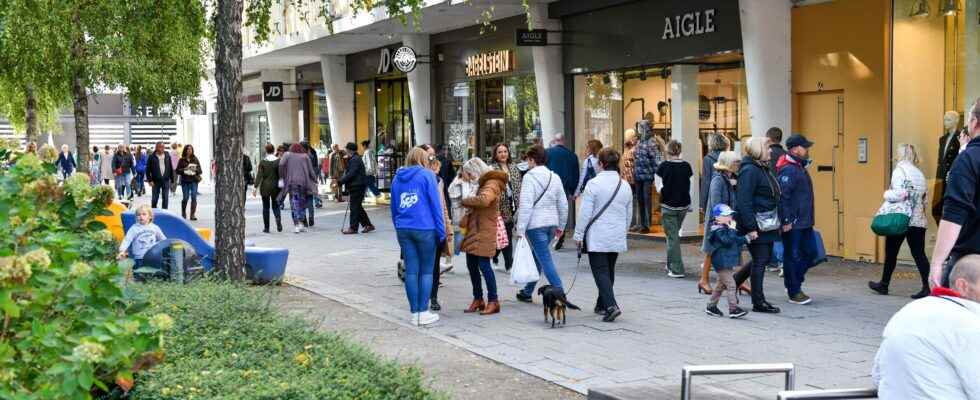An industrial city, concrete, polluted and without charm that does not really make you want to linger despite the long and pretty sandy beach of Malo-les-Bains… Here is an image that Dunkirk is doing everything to get rid of. And it gives itself the means, with great blows of pedestrianization and demolished facades. But also by supporting the stores in its city center. “In 2014, the commercial vacancy rate was 11%. It is only 5.9% today. And in the hypercentre, it is even around 3.5%”, rejoices Patrice Vergriete , mayor (various left) of the sub-prefecture of the North, who adds: “We have also seen a move upmarket in our offer with the arrival of more qualitative brands. Florent Ladeyn, starred chef, for example, will soon open a restaurant here.” The creation of a city center manager position, who dialogues in real time with traders, is not for nothing.
Lay the foundation
If the traditional fries stalls are always welcome within its walls, Dunkirk makes no secret of it: it aims above all for modernity and attractiveness. “To revitalize our city center, we started by laying the foundations between 2014 and 2017”, explains the elected official. The basics ? That is to say public tranquility, with the establishment of a dedicated municipal police brigade and video surveillance cameras. Aesthetics, with the obligatory restoration of all facades. And finally the entertainment, with the multiplication of festive events, such as “Dunkirk the fairytale”, to attract onlookers and curious people in the streets of the city outside the famous carnival. The second phase, between 2017 and 2020, was that of major works.
“We have invested more than 60 million euros in the renovation of public spaces to give a facelift and a boost to the heart of the city”, continues Patrice Vergriete. With the key, a redesigned and free bus network, the pedestrianization of Place Jean-Bart, the upscaling of terraces and the installation of brand new designer street furniture in pop colors. “All of this has paid off, since pedestrian flows have increased by more than 20% in the center, and even 30% on certain arteries”, details the mayor. A saving influx for local stores, as recognized by Olivier Rouliat, restaurateur and president of a local merchants association. “With the Covid and the war in Ukraine, we suffered a lot. But in our misfortune, we, Dunkirk traders, are lucky to be in the right place. In the surrounding towns which have not launched the same type of revitalization , like Calais or Boulogne, the city centers are doing very badly. Here, few people have gone out of business. Finding a lease has even become difficult.”
Return of wealthy families and households
Olivier Rouliat is not the only one to make this positive observation. “Along with Arras and Mulhouse, Dunkirk is one of the very few cities which, starting from a difficult situation, have been able to raise the bar, assures Sami Kitar, head of the Design Office of the Procos federation, which brings together around 300 national brands ( excluding food). She carried out a real reflection and knew how to take the right measures, in particular by bringing families and wealthy households back to the heart of the city. Starting from the principle that “a stagnant downtown is a declining downtown”, the mayor has in mind a host of other ideas that he expects to see materialize before the end of his mandate.
The revegetation and pedestrianization of a new central artery, designed in concert with the inhabitants. The creation of a large food hall that would give pride of place to local and organic products by 2024. Not to mention the “Docks de la marine” project, including the creation of 11,000 square meters of commercial premises to allow major brands to set up shop by 2026, or even the construction, near the station, of a 24,000 square meter leisure center which should open in 2027. So much good news for Dunkirk merchants.
